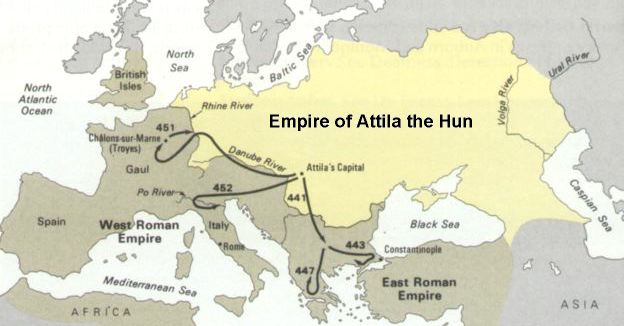1 x General - Attila (Lh) or (Cv) 7 x (2Lh) 1 x (3Kn) 2 x (4Wb) 1 x (2Ps)
Historical Enemies: Early Ostrogoth's, Herul, Sciri or Taifali, Early Frankish, Rugian or Turcilingi, Burgundi, Later Visigoth's, Alan's, Sassanid Persians and Patrician Roman (East and West)
Brief Historical Notes: The Huns, were to my understanding, a Turkic speaking people who lived in northern - western regions of Ancient China during the Han Dynasty (200-1 BC). The Huns (also know as Xiong-nu) tried to over run China and failed badly so much so the Hunnic tribal leaders at the time, split into two factional groups and abandoned China altogether, one went south towards India and the main group went north-west to Siberia. (Interesting to note, the Han Dynasty began early construction stages of the Great Wall of China during the menacing Xiongnu or Hunnic attacks)
The Xiongnu or Hunnic groups gradually crossed and met Central Southern steppes of Russia. By 350 AD the Huns were also heading for Europe, pushing the Scythians before them and other various Germanic groups, like the Visigoths and the Ostrogoths were in turn pushed westward by the Scythians, the Goths asked and got Roman protection but at a price.
In 440-441 AD King Bleda, Attila's brother, launched several campaigns against the Eastern Roman Empire with successful results, in 445 AD Bleda died of natural causes or was murdered?, Attila became King and in 447 AD launched a major "offensive" campaign of his own against the Eastern Roman Empire sacking village after village and spreading terror through out the Roman Empire. Attila's Hunnic Hordes, along with his Germanic allies, invaded and sacked Thrace and North-Central Greece.
In 451 AD Attila invaded Western Roman Empire, modern day France and Germany, sacking villages/towns/minor cities i.e. Metz. During the siege of Orleans the Roman Commander Aetius arrived with his forces and a major battle was fought at Chalons in June 451 AD. After indecisive, hard fighting and slaughtering each other Attila decided to withdrew his forces to recover his losses and rest his fatigued army in Hungary.
In 452 AD Attila launched an invasion of Italy, sacking yet again village after village, Lombardy was a waste land, Rome was threaten, Pope Leo I intervened and after a private meeting with Attila, probably bribed, agreed to abandoned Rome and move his forces back to Hungary. In 453 AD Attila died of a brain hemorrhage? on his wedding night.
After the death of Attila, his three sons split the empire between them. The Huns never again became a strong and feared force, and gradually mixed into the Germans and the Slavs. Their distanced relatives, the Turks and Mongols, however, later succeeded in taking over most of Asia as the Ottoman Empire and the Mongol Empire.
 |
| Attila with Escorts as (3Cv) |
 |
| Attila with Standard as (2Lh) |
 |
Hunnic Nobles (3Kn) |
 |
Germanic (Goths) Infantry 2 x (4Wb) |
 |
Germanic Skirmishers 1 x (2Ps) |
some more pictures!........
























































